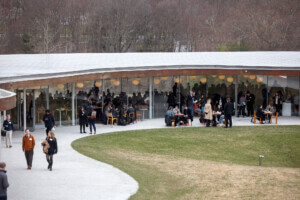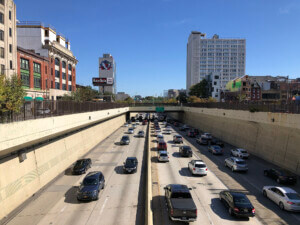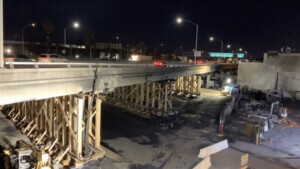In cities around the country, residents are in various stages of working to remove elevated or sunken highways that seemed promising in the 1950s and 1960s but are now considered by many to be planning blunders.
These highways were built with federal funds to make it easy for commuters to get in and out of cities quickly by bypassing an older grid of narrow streets and stoplights. Many cut off one part of town from another and take potential customers away from stores and restaurants below. Others literally wiped out livable communities by displacing homes and businesses in their path.
As long as the elevated highways didn’t need more than routine maintenance, cities and states didn’t have a strong financial incentive to take them down. But these midcentury structures are now approaching the end of their expected life spans, requiring costly repairs or replacement, so communities are questioning whether it’s a wise use of public funds to perpetuate the status quo by keeping them in place and whether it makes more sense to take a different approach.
That’s where the Biden administration’s infrastructure plan, which still needs congressional approval, comes in. The White House in March unveiled a $2.25 trillion proposal, calling it a “once in a generation” investment that would produce the country’s largest jobs program since World War II and the interstate highway construction program that began in the 1950s. It also expands the previously accepted definition of infrastructure by going beyond merely upgrading highways and bridges to rethinking them.
One key goal, according to a White House fact sheet, is to “redress historic inequities” created in part by the way the federal government invested in roads and highways in the past, with “transformative investments” for the next generation. Another is to provide money that can bridge a funding gap and turn “shovel-worthy” projects into “shovel-ready” projects.
“Too often, transportation investments divided communities—like the Claiborne Expressway in New Orleans or I-81 in Syracuse—or it left out the people most in need of affordable transportation options,” the White House said. “The President’s plan includes $20 billion for a new program that will reconnect historic neighborhoods cut off by historic investments and ensure new projects increase opportunity, advance racial equity and environmental justice, and promote affordable access.”
In most cases, the push to take down elevated highways is coming from community groups rather than state or city planners. Lack of funding is a recurring issue, but that’s what Biden’s infrastructure plan would help address.
According to Ben Crowther of the Congress for the New Urbanism, and others, approximately 30 more communities are in various stages of exploring plans to take down elevated highways.
Buffalo, New York (Kensington and Scajaquada Expressways)
Fans of Frederick Law Olmsted and others are leading an effort to remove the Kensington (Route 33) and Scajaquada (Route 198) Expressways, which cut through two city parks that are part of an Olmsted-designed park system. The Restore Our Community Coalition, the Scajaquada Corridor Coalition, GObike, and the Olmsted Parks Conservancy are among the groups working to restore the parks in keeping with Olmsted’s designs. The state has hired Stantec to complete a regional transportation study, and the first public engagement session for that work is expected to take place in June.
Portland, Oregon (I-5)
I-5 is an elevated highway that cuts Portland’s mixed-use Central Eastside neighborhood, a once-industrial area that is now popular for its breweries and new housing options, off from the Willamette River. Several groups, including Riverfront for People and the No More Freeway Expansions Coalition, have proposed removing I-5 to enable the Central Eastside neighborhood to expand toward the river, just as the Harbor Drive freeway on the west side of the river was replaced with Waterfront Park. Harbor Drive was eliminated in 1974, making it one of the earliest freeway removal projects in the country and providing a model for the east side of the river. What makes it not so easy is that Harbor Drive was removed in part because the construction of I-5 made it redundant, but nothing is making I-5 redundant.
Syracuse, New York (I-81)
An elevated section of I-81 known as The Viaduct needs to be replaced because of its age and condition. A group called ReThink81 proposed that it be replaced with a “community grid” of pedestrian-friendly streets that would help repair and reconnect the road network that was interrupted when The Viaduct was built, rather than rebuilding the passageway or creating a wider boulevard. The idea has gained widespread support, and a group called the Moving People Transportation Coalition has formed to increase awareness of the merits of the “community grid” proposal. New York governor Andrew Cuomo said in his State of the State address in January and again in April that he expects removal of The Viaduct to begin in 2022.
New Orleans (Claiborne Expressway, I-10)
Perhaps the poster child of the highway teardown movement, this elevated expressway looms over Claiborne Avenue, the main commercial boulevard and gathering place for the Tremé neighborhood. Proponents say they’d like to see the expressway removed and Claiborne Avenue restored, including its wide median and the traffic circle where it intersects with St. Bernard Avenue, and they’re glad the project was singled out in the infrastructure plan.
Austin, Texas (I-35)
The Texas Department of Transportation has been taking public comments on plans to rebuild an eight-mile stretch of I-35 that separates the east side of the city from the west side. A group called Reconnect Austin has proposed a multifaceted plan that includes demolishing part of I-35, depressing part of it, and covering the depressed lanes with a boulevard. Others that have weighed in include the City of Austin, Travis County, the Downtown Austin Alliance, the Urban Land Institute, and a group called Rethink35.
Denver (I-70)
Although Colorado’s transportation department has been working to replace and expand portions of the elevated I-70 highway, in part by condemning land and building a sunken freeway, portions of I-70 were closed May 21 so the state could shift traffic to a new lowered section of the Central 70 project, called The Mile High Shift. Demolition of a structurally deficient 57-year-old viaduct began the following day, making Denver the latest city to see at least part of an elevated highway taken down.
Tampa, Florida (I-275)
An 11-mile section of I-275 constructed over Central Avenue in downtown Tampa disrupts Ybor City and other neighborhoods. A local group, #blvdtampa, has proposed replacing it with a landscaped boulevard featuring bike and pedestrian paths plus a light rail, bus, or streetcar line.
Oakland, California (I-980)
The group ConnectOAKLAND has called for I-980 to be removed and replaced by a narrower boulevard that would be healthier for the neighborhoods in West Oakland, which have high asthma rates, and support the economic growth of Uptown Oakland. City officials have been exploring the idea of removing I-980 as part of their Downtown Oakland Plan.
Dallas (I-345)
This 1.4-mile elevated highway separates Dallas’s Deep Ellum neighborhood, a mostly African-American community, from downtown. A new study by the Toole Design Group and others, called the Framework Plan, updates an earlier Texas Department of Transportation study called CityMAP and presents two highway removal options for public consideration—replacing I-345 with either a surface boulevard or a sunken highway.
Louisville, Kentucky (I-64)
Running along the Ohio River, I-64 is one of five interstate highways or beltways that barrel through Louisville and one of the worst offenders when it comes to cutting a city off from its waterfront. A local group called 8664 has proposed replacing a 2-mile stretch of I-64 with an at-grade parkway and expanded waterfront park as a way to decrease the number of elevated highways in the city and increase access to the riverfront.











